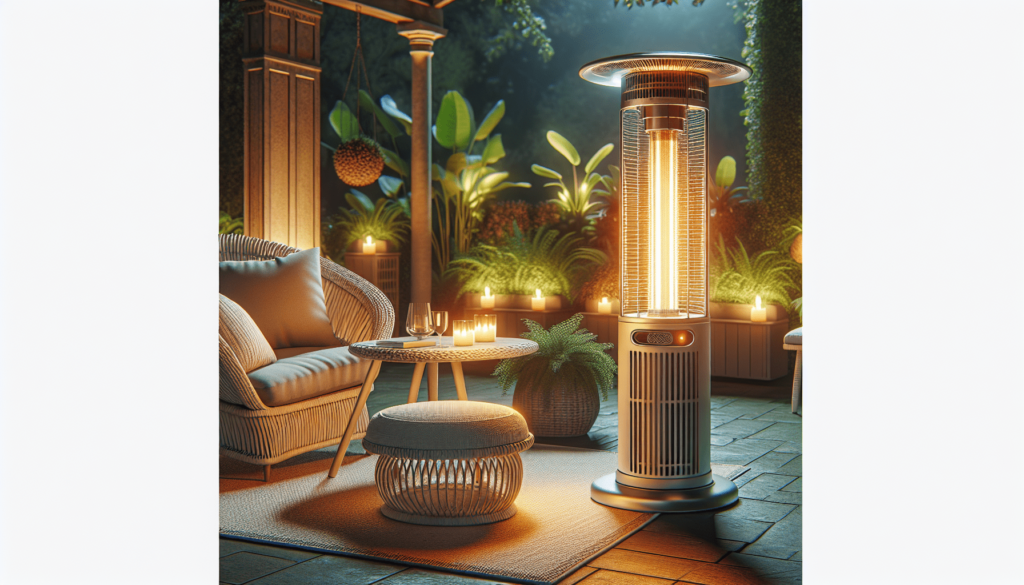
Are you wondering if those rumors about patio heaters are actually true? The world of outdoor heating can seem complex, and like any industry, it’s peppered with myths and misunderstandings. Those myths can be powerful enough to turn you away from even considering a patio heater for your home or business. Let’s unravel these myths and figures together, so you can make informed decisions with confidence.

What Exactly Are Patio Heaters?
Before tackling misconceptions, it helps to understand what you’re working with. Patio heaters are devices designed to extend the outdoor season by providing warmth. They come in various designs, including freestanding, tabletop, and wall-mounted models. Popular fuel sources for patio heaters include propane, natural gas, and electricity. With brands like Sunjoy, Fire Sense, and Hiland Heater offering a range of products, there’s a solution for almost any outdoor space.
The Basics of How They Work
Patio heaters function by directing heat towards nearby areas. Infrared models radiate heat, akin to the sun, warming objects and people rather than just the air. On the other hand, traditional gas heaters might warm the surrounding air, providing a cozy atmosphere. This understanding is crucial to demystifying common misconceptions about these devices.
Myth #1: Patio Heaters Are Unnaturally Expensive
Some people believe patio heaters are a luxury item and therefore out of budget. However, this is a misconception. The cost of patio heaters varies widely depending on factors like type, brand, and features. While high-end models can indeed be pricey, there are plenty of affordable options for those on a budget.
Why Budget Shouldn’t Be a Barrier
Let’s take a closer look at cost-effectiveness. Electric models, once installed, often have minimal operational costs compared to gas-fueled ones. Additionally, the initial investment can be recuperated within a few seasons as it increases the usable space of your property, adding value to your home or business.
A Comparative Cost Analysis
Here’s a simplified table to clarify cost differences:
| Heater Type | Initial Cost | Operational Cost | Maintenance Cost |
|---|---|---|---|
| Electric | Low to Medium | Low | Low |
| Propane | Medium | Medium to High | Medium |
| Natural Gas | Medium | Low | Medium |
While upfront costs can differ, it’s clear that electric heaters might offer budget-friendly operation in the long run.
Myth #2: They’re Unsafe to Use
Safety concerns often loom large when thinking about heating appliances. Worries about fires or gas leaks can dissuade someone from making a purchase, but are these fears warranted with patio heaters?
Understanding Safety Features
Modern patio heaters are built with safety in mind. Features such as automatic shut-off, tilt safety mechanisms, and secure fuel compartments help mitigate potential hazards. For example, brands like Thermo Tiki incorporate safety valves that cut the flame should the heater tip over, significantly reducing the risk of accidents.
Following Proper Usage Guidelines
Adhering to manufacturer guidelines significantly enhances safety. Installing your heater according to instructions, maintaining it well, and using the correct fuel are all part of responsible ownership. Doing so minimizes any risk factors and can actually make using a patio heater as safe as any other household appliance.
Myth #3: Patio Heaters Are Only for Commercial Use
Another misunderstanding is that patio heaters are only useful for business settings, like restaurant patios. While businesses certainly benefit, homeowners are just as likely to find them valuable.
Extending Your Own Home Comfort
Why limit comfort to indoors when you can enjoy your patio, deck, or garden throughout the year? Homeowners find that patio heaters help create cozy outdoor retreats for reading, dining, or gatherings.
Popular Choices for Home Use
Choices like the Hampton Bay Stainless Steel Model, known for its sleek design, cater specifically to home environments. Families choose these for their versatility and ease of use, providing warmth without the need for intricate setups or maintenance.

Myth #4: Patio Heaters Are Environmentally Harmful
Patio heaters can be perceived as environmentally unfriendly due to their emission of carbon dioxide, particularly in gas models. So, are they significantly harmful to the environment?
Assessing Carbon Footprint
All heating solutions have an environmental impact, but not all impacts are equal. It’s about making informed choices. Electric models powered by renewable energy sources, for instance, can mitigate carbon footprints. Meanwhile, modern propane and natural gas models are designed to be energy-efficient, significantly lowering their environmental impact.
Moving Toward Greener Solutions
Brands such as Bromic and Lava Heat invest in eco-friendly technologies to improve energy efficiency. By opting for these greener solutions, you can enjoy warmth without excessive ecological concerns.
Myth #5: Heat Output Isn’t Enough in Cold Temperatures
Especially in regions with harsher climates, some believe that patio heaters might not provide sufficient warmth. This myth might prevent potential users from enjoying their outdoor spaces, but does it have a basis in reality?
Evaluating Heater Efficiency
Patio heaters like the Dr. Infrared Patio Heater specify coverage areas and heat output, allowing users to match models to climate needs accurately. These heaters include options that can warm up to a 20-foot radius, ensuring they deliver in various conditions.
Choosing the Right Product for Your Conditions
The secret to effective heating lies in selection. Models are equipped with different BTU levels, designed for various weather scenarios. It’s about choosing a heater fit for your specific region and space to maximize comfort.
Myth #6: Patio Heaters Are Difficult to Install and Use
The installation process and usability can sometimes overwhelm potential buyers. Is this process as complicated as it sounds?
Simplicity in Design and Function
Most patio heaters are designed for convenience, with simplicity at their core. Many models come with easy-start ignition systems or plug-and-use functionalities. For propane heaters, the most “complicated” task might be connecting the gas cylinder, a straightforward process for most users.
Assistance and Support
Manufacturers provide extensive resources — tutorials, guides, and customer support — making the installation much less daunting. Additionally, many installation services can handle setup if it’s outside your comfort range, ensuring a stress-free experience.
Concluding Thoughts: Empowered Decisions
Understanding the reality behind these myths enables you to make empowered decisions. With this knowledge, you can choose a patio heater that complements your needs without misconceptions clouding your judgment. Feel ready to warm up your outdoors all year round with confidence, creating the kind of inviting space you’ll love to enjoy.




